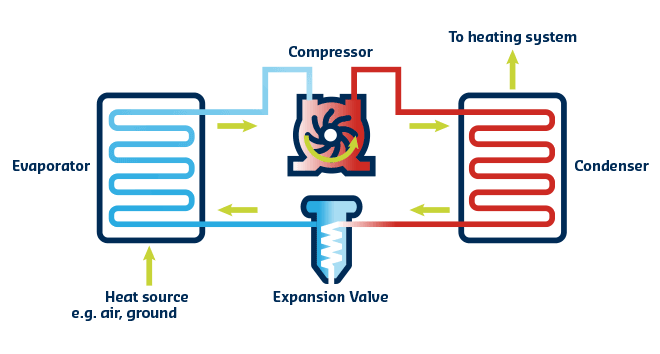Ontario has a long way to go to reach its conservation goals and heat pumps may be a great opportunity to reduce emissions and save money on a massive scale. We’re exploring how heat pumps might tackle GHGs by targeting the low-hanging fruit. About 24% of Ontario’s multi-unit residential buildings are electrically heated, so while natural gas prices are low and electricity prices are high, these are a great place to start.
The goal of the Pumping Energy Savings project is to demonstrate the business case and provide tools and resources for others to implement heat pump retrofits, specifically in electrically-heated multi-unit residential buildings – we’re calling them EMURBs. TAF’s research team has conducted an EMURB market assessment, and over the next two years will provide financial and technical feasibility studies, research on the GHG reduction potential, retrofit guidelines and financial analysis tools for market stakeholders, and recommendations for conservation programming and scale-up.
Findings from the Market Characterization Study
Our initial market study has found promising evidence that electricity consumption for heating EMURBs is big. 13% of annual electricity consumption for all multi-unit residential properties in Ontario is just for electric space heating. That means that if we retrofitted every EMURB with heat pumps, even with conservative savings estimates (60%), we would achieve 1.2 TWh of annual energy savings, 17% of Ontario’s 2020 conservation target.
Some key findings*
- 24% of Ontario’s multi-unit residential building stock is electrically-heated.
- 1,921 GWh/year is the total electricity consumed for space heating in EMURB sector.
- Electric resistance baseboards are the most common heating equipment found in EMURBs.
- On average, 42% of electricity use in EMURBs is for space heating; and as much as 65%.
- Four key market segments were identified for targeted heat pump retrofit programming. Large bulk-metered rental apartment buildings with electric resistance baseboard heaters are the top market segment.
*Estimates
Stakeholder perceptions
Interviews with key stakeholders revealed a number of insights including:
- Heat pump retrofits in EMURBs have been identified by LDCs as a potential growth area.
- A lack of technical and financial data remains a key barrier to heat pump retrofits.
- Demonstration projects and case studies would help build market confidence.
- Direct financial incentives would be the most effective method for motivating property stakeholders to participate in an electric heating system retrofit.
- Investor interest for heat pump retrofits in EMURBs could be bolstered with guidelines for how to structure deals and what items each stakeholder will need to consider, negotiate and agree on.
Looking Ahead
The next project phase will be to conduct feasibility studies on eight ‘typical’ EMURB properties. A current barrier to retrofitting EMURBs is the current lack of real world examples. Although geothermal and air source heat pumps are proven technologies that are becoming more common place in newly constructed properties, retrofit examples are few and far between. Eight properties will be selected to participate in a study to assess the technical and financial feasibility of retrofitting their electric heating system with either air or ground source heat pumps. The goal is to generate valuable data that can demonstrate the viability of heat pumps compared to electric heating, what heat pump solutions are conducive to various EMURB property types, and how to go about implementing the heat pump retrofit scenarios identified as being the most technically and financially feasible.
How heat pumps work
This work was made possible with the support of the IESO and Ontario Property Management Group, and in-kind contributions from Toronto Hydro and Horizon Utilities.
To find out more about the Pumping Energy Savings, click here.
Heat pump infographic: markgroup.co.uk
Main image credit: Flickr – Ecolivingho


Do I understand that the TAF info is just about systems for multi unit buildings or am I wrong.
Presently on electric heat and considering changing to another system.
Hi John,
Yes, the research referenced here was specifically for electrically-heated multi-unit residential buildings.
However, here are some resources for to retrofit your home. https://taf.ca/new-towerwise-video-energy-retrofits/
Thanks,
Diana